The Birth of a Meteor Shower
A comet that’s never crossed Earth’s orbit might lead to the most spectacular sky show in years!
“I would rather be ashes than dust! I would rather be a superb meteor, every atom of me in magnificent glow, than a sleepy and permanent planet.” -Jack London
Here in the inner Solar System, we think about space as a relatively empty, peaceful place. Aside from the Moon, large objects typically never make it anywhere near our world; most everything else is tiny.

Even most of the objects that occasionally whiz past (or even collide into) our world are too small to leave any sort of lasting legacy. But the asteroid belt, Kuiper belt and the Oort cloud are all full of objects not only the sizes of cars and trucks, but of mountains, countries, and even small planets! Because there are so many of these objects orbiting near one another — and in the case of the asteroid and Kuiper belts, massive gas giant planets nearby — every once in a while, one of these significant masses will have its motion altered so that it plunges into the inner Solar System.
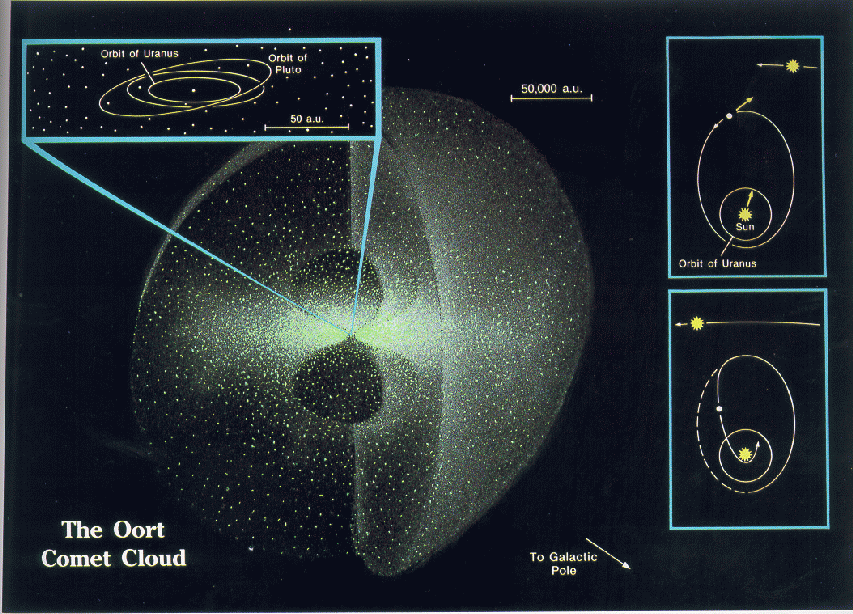
As an object like this hurtles towards the Sun, it heats up as it approaches closer and closer. Unlike the inner, rocky planets, these outer, solid bodies are in large part made up of ices, including water ice, carbon dioxide, methane ice and more. (Even asteroids are at the Solar System’s frost line, and contain copious amounts of water ice.) When ice heats up in the vacuum of space, it sublimates directly into the gaseous phase. And this — combined with the outward particles emitted by the solar wind — produces a periodic sight familiar to fortunate skywatchers: a comet! (Or, in some cases, an asteroid with a tail, which I’ll just refer to for the rest of this article as a comet, also, for simplicity.)
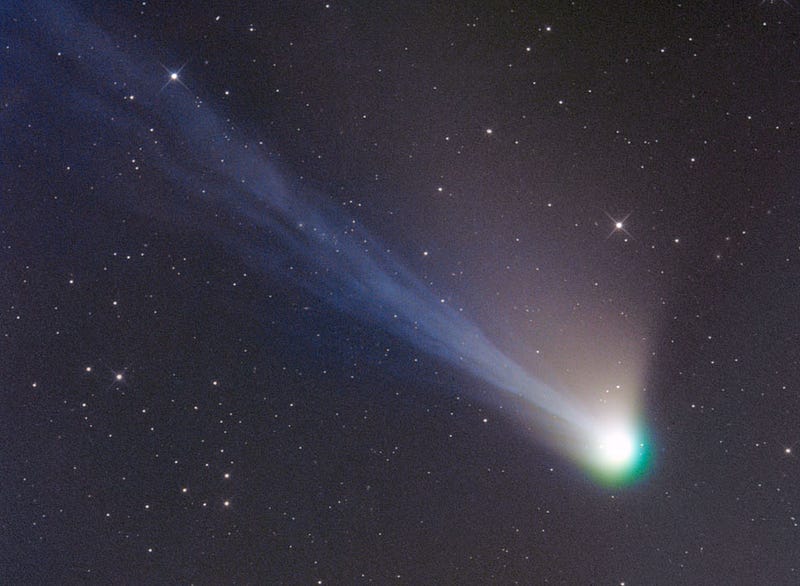
While we normally think of comets as massive, ice-and-rock nuclei, we have to remember two important things about them:
1.) It takes, on average, billions of years for the right combination of gravitational interactions to alter their orbits and send them into the inner Solar System. Once that happens, the odds that another gravitational interaction will alter their orbit again is very small. In other words, once you give one of these objects a very eccentric orbit that takes it near the Sun, it’s quite rare that another gravitational interaction will change its trajectory again. Rare, mind you, but not impossible.

2.) As these objects pass near the Sun over and over again, periodically, small, rocky dust particles get expelled from the comet’s nucleus in a tail that curves away from the Sun. But in addition to the diffuse dusty tails, when comets (or asteroids) pass too close to a massive body (like the Sun) or get too hot (like, from the Sun), they tend to break up. It might only be by a little bit, it might just be a tiny chunk here-or-there that breaks off. But when that happens, there will be a slew of tiny particles that come off — some a little faster, some a little slower — that, over enough time and enough orbits, can create that ring of micrometeoroids we know must exist.
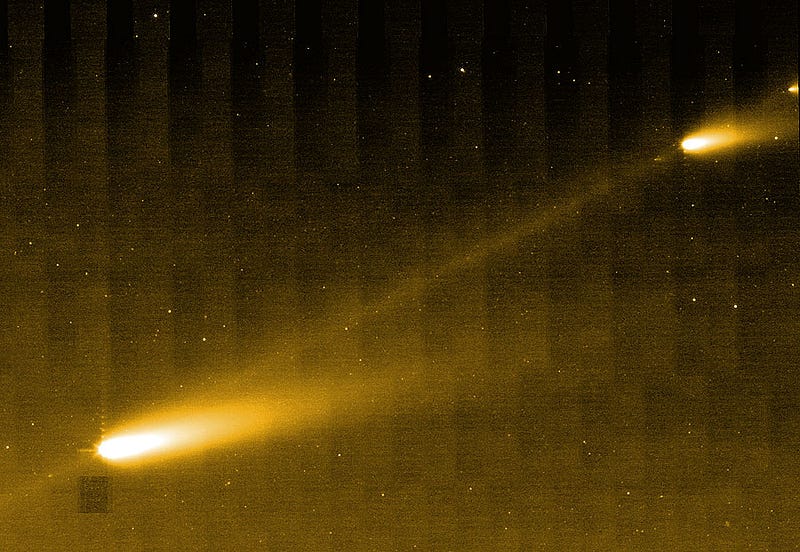
Most of the famous meteor showers that regularly occur during the year, including the Lyrids, the Leonids and the Perseids, can be traced to periodic comets: Comet C/1861 G1 (Thatcher), Comet Tempel-Tuttle (55P), and Comet Swift-Tuttle (109P), respectively. Over the course of many orbits, this cometary dust — some of which moves slightly slower than the main nucleus itself and some of which moves slightly faster — gets stretched out into a roughly even, elliptical ring.
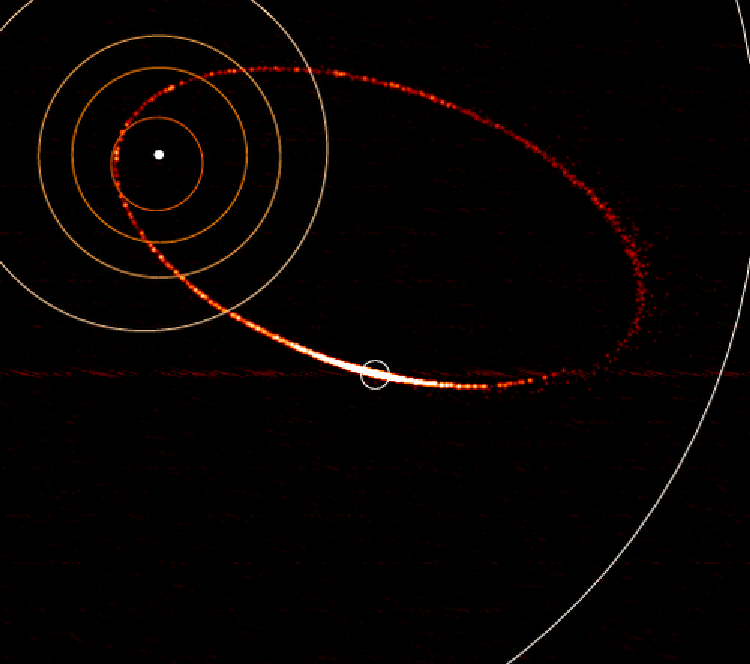
But even in this case, the dust grains are never truly uniform. If a comet that completes an orbit every 200 years has a particularly violent outburst during one pass, then if Earth passes either just in front of or just behind the comet during the next time it enters the inner Solar System, we could wind up with a meteor storm, where observers could wind up seeing many hundreds or even thousands of meteors per hour!
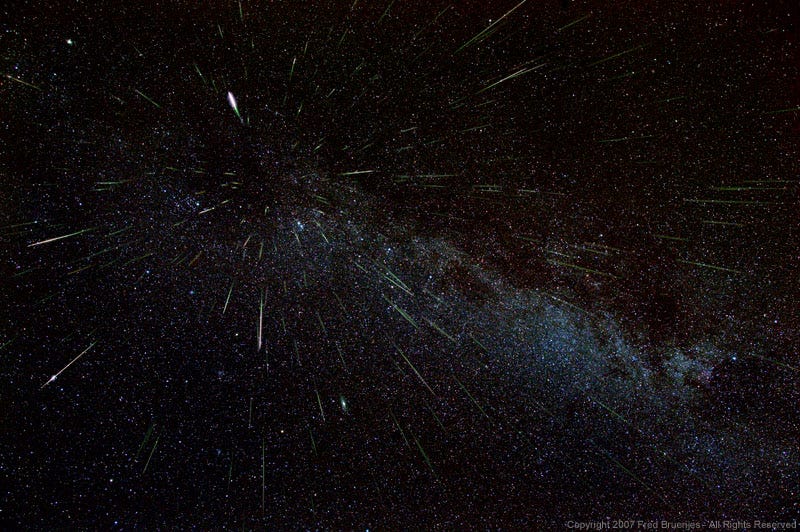
Well, there’s a very short period comet — Comet 209P/LINEAR — that completes an orbit every 5.09 years. Because of the way the comet (first discovered in 2004) and its orbit were oriented, it (and the dusty debris surrounding it) didn’t come close to Earth. But this year will different; in 2012, it passed close by to Jupiter, which changed its orbit slightly. For the first time in history, this comet will pass within just 5 million miles (8 million km) of Earth on May 29th. Along with it, it’s expected that a large fraction of the dusty debris in that elliptical orbit will pass near Earth as well!

Just a few days prior to that — on the night of May 23rd/early morning of May 24th — Earth will cross the path of the expected debris from many previous passes of the comet from the 19th and 20th centuries. In fact, at 3 AM Eastern Time on the 24th / midnight Pacific on the 23rd, the Earth will pass just an estimated 30,000 km (or 19,000 miles) from the densest part of the comet’s expected dust path. Although a substantial amount of dust from this comet has never come in contact with Earth before, this year could be different!

If our most optimistic calculations and estimates for the dust — which we cannot see, mind you — are incorrect, we might see ten or fewer meteors per hour, barely worth noticing. But under the most optimistic of estimates, particularly for American skywatchers on the western portion of their continent, who won’t have to contend with a Moon in their skies when the shower is supposed to peak, we might see as many as 400 meteors per hour, or the most spectacular meteor shower in many years!
Here’s where you should look.

We’ve never witnessed the birth of a meteor shower in all of recorded human history, where we saw a meteor shower in a place and at a time where none had ever been observed before. If this pans out, the Camelopardalids will be the first!
So have a look near Polaris — the North Star — on Friday night/Saturday morning if you’ve got the time, and you could be among the first humans ever to observe the Camelopardalids, and what just might become our planet’s newest meteor shower!
Have a comment? Leave it at the Starts With A Bang forum on Scienceblogs!





